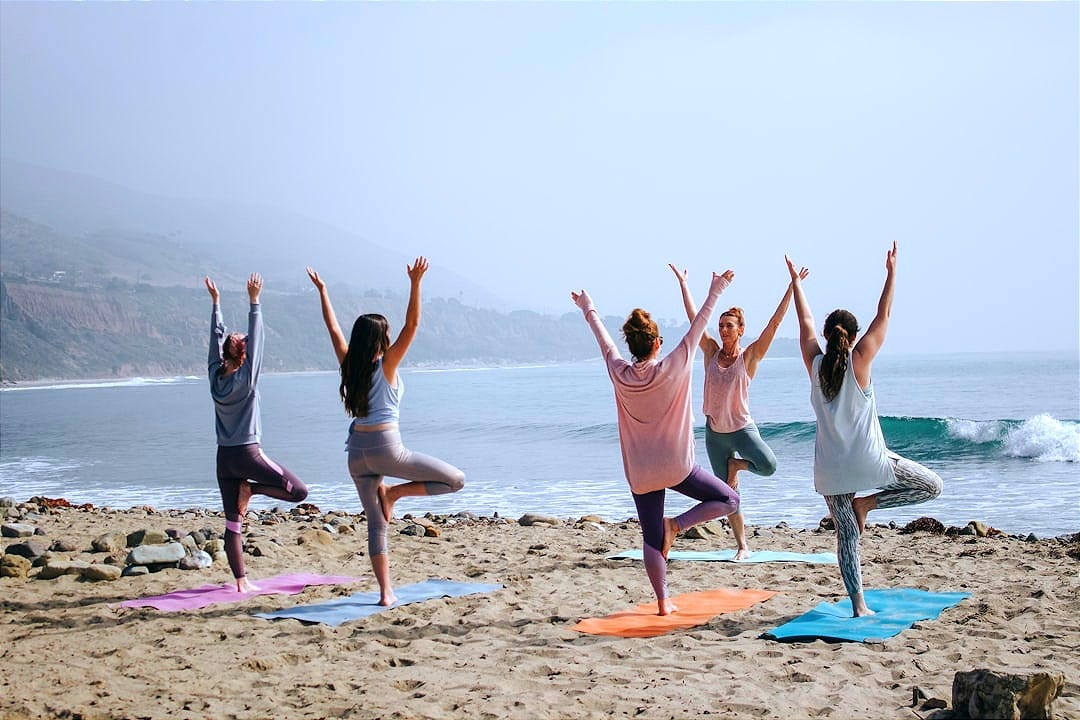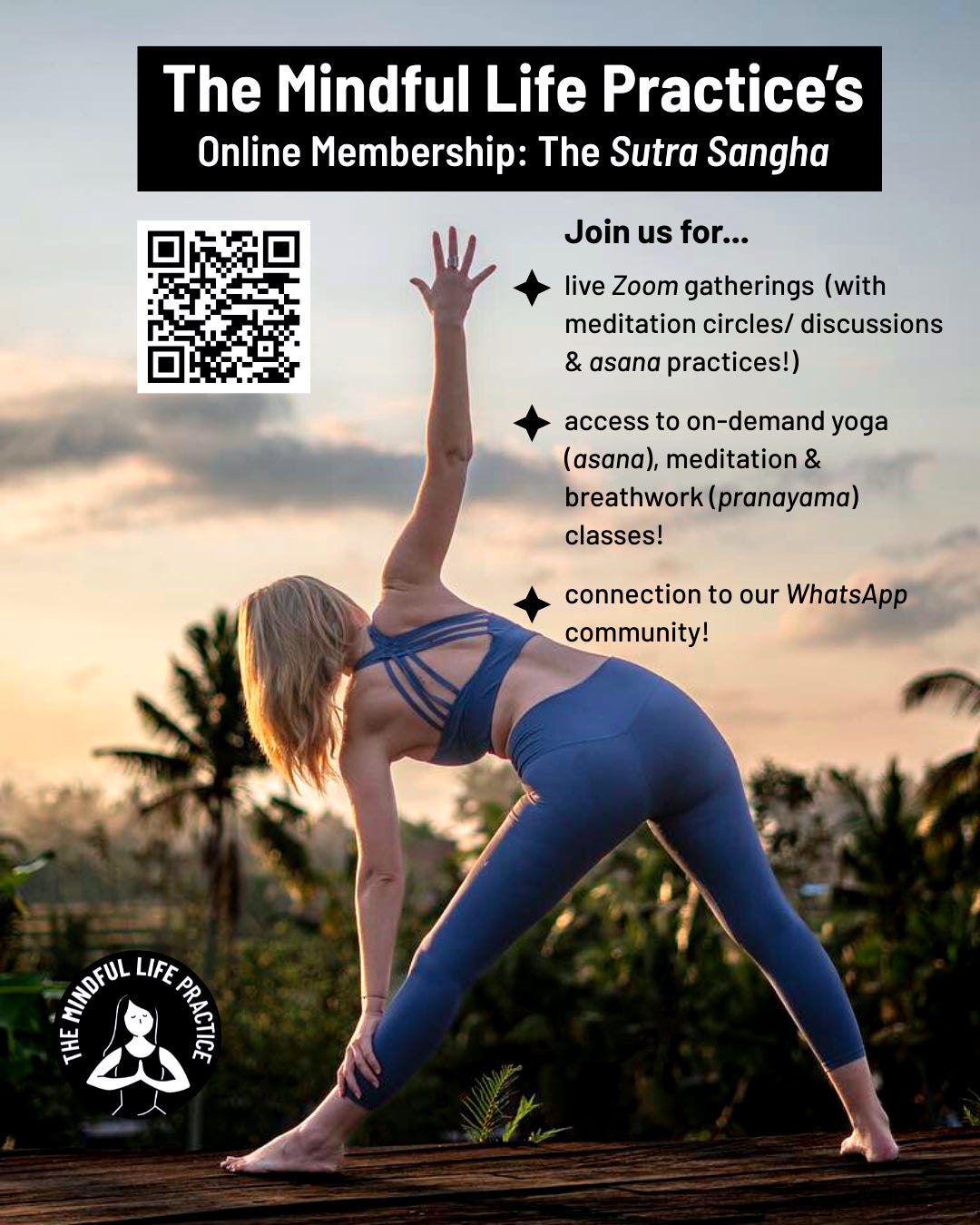By Jess Macklin-Mitchell
On June 21st, as the sun touches every corner of the globe, yoga practitioners will gather once again to breathe, move, and root into the present moment for “International Yoga Day 2025.” This year’s theme, “Yoga for One Earth, One Health,” feels less like a slogan and more like a mantra. It is a statement that gently reminds us that our wellness and the planet’s wellness are intertwined. Caring for the self and caring for the Earth are not two separate paths, but one.

In a world that is constantly pulsing with urgency, distraction, and consumerism, the idea that stillness is a form of action may seem counterintuitive. But yoga has always offered a quiet rebellion due to its resistance to the dominant, driving ideas that “more is better,” “faster is superior,” and “productivity is a virtue.”
Through the values of simplicity, restraint, presence, and selfless service, yoga becomes more than a practice. Yoga becomes a form of subtle and sacred activism.
Returning to the Heart of the Practice
Today, yoga travels fast. The practice now lives in digital classes, streaming playlists, and commercial studios around the world. Yoga has expanded beyond ancient texts and ashrams and made its way into offices, fitness clubs, and Instagram reels. But amidst this globalisation, something quiet and essential still pulses at the heart of yoga: a call to slow down and to live with intention.
As we recognise International Yoga Day in 2025, we’re invited not only to honor yoga’s cultural roots, but to explore its modern relevance. How can ancient values help us to meet today’s global crises? How can we meet such problems as rising temperatures, failing systems, and fractured communities with steadiness and care?
The Activism of Non-Doing
We live in an age of excess. Amidst an overload of excess information, stimulation, and consumption, the simple act of slowing down becomes revolutionary.
Yoga teaches us to pause. Whether we are on our mats or going about our daily routines, yoga encourages us to inhale, notice and listen.
When we choose rest over rush, presence over productivity, and enough over more, we aren’t embracing laziness—we’re embracing wisdom. Slowing down allows us to radically turn inwards and create space for insight, compassion, and clarity.
Stillness, in this sense, is not passive. What seems to be inaction, is actually a deliberate act of refusal. We refuse to feed the systems that exhaust both ourselves and the Earth, and we welcome a practice that is more sustainable, gentle, and whole.
Practicing Non-Violence (Ahimsa) and Non-Possessiveness (Aparigraha)
As Sattva Yoga Academy explains, the yama(s) are “fundamental ethical disciplines [that are] designed to refine our interactions with the world around us. These principles are not just theoretical; they have practical applications both on and off the yoga mat, [and they] deeply influenc[e] our personal growth and societal harmony.”
Two of the yama(s) stand out as especially relevant to this year’s theme of “Yoga for One Earth, One Health.”
Ahimsa (non-violence): More than trying our best not to harm others, ahimsa invites us to act from compassion in terms of how we speak, eat and consume.
Practicing ahimsa, for example, might look like deciding to eat plant-based meals, or carefully selecting kind words when we are communicating with others.
Ahimsa might also involve becoming more mindful of our consumption and striving to reduce the impact that our consumption has on other people, animals, and the planet.
Photo by Taneli Lahtinen on Unsplash
Aparigraha (non-possessiveness): In a consumer culture that urges us to want, buy, upgrade, and accumulate, this yama gently whispers to us that we already have enough.
Practicing aparigraha, therefore, might involve letting go of excess, rethinking our relationships with material items, and/or releasing the emotional clutter that we are carrying with us.
Together, these two values form a foundation for public health. They promote less violence, less grasping and more peace ---both for ourselves and for the planet.
Karma Yoga
Karma Yoga, or the yoga of action, is often misunderstood. This practice isn’t confined to volunteering or donating to a charity. Karma Yoga simply asks us to do what needs to be done…without attachment to the outcome.
What does karma yoga look like? This practice occurs when we…
garden without seeking praise,
cook for others without expecting any words of thanks, or
pick up trash without feeling the need to post about it on social media.
This ethical living manifests as daily activism, and we commit to living with integrity and service in the small, unseen moments. Karma Yoga teaches us that how we live is just as important as how we practice.
In this light, yoga is not a pose or a product. Yoga is our participation in the world that we want to heal.
Yogic Minimalism
So much of what harms the Earth is rooted in the idea that we always need more: more clothes, more technology, more status, and more comfort.
Yoga reminds us that less can be more, and a quiet home, a simple meal, or a shared walk may bring us more contentment than any new purchase.
When we choose minimalism as a yogic value (and not as a trend), it can look like:
using what we have, and taking good care of these items so that they last;
prioritizing durability over disposability; and
choosing quality and intention over quantity and impulse.
When we consume less, we free up time, energy, and space. We produce less waste. We step more lightly on the Earth, and our practice becomes a gesture of love.
Tending to our Inner world to Heal the Outer World
In yogic philosophy, the inner world reflects the outer. Our breath reflects the wind, our digestive fire echoes the fire of the sun and our internal rhythms mimic the seasons.
When our inner world is overwhelmed (cluttered with anxiety, stress, and disconnection), it becomes harder to act from a place of wisdom and insight.
By tending to our inner ecology through the use of postures (asana), breath control (pranayama), meditation (dyana), and rest, we strengthen our capacity to show up for the collective. A grounded nervous system supports better decision-making. A calm heart creates space for empathy.
Yoga becomes the compost for change. Our yoga practice cultivates the inner garden that helps the outer world to bloom.

The Global Ripple of Conscious Living
The quietest practices often have the deepest echoes. Practices such as…
a slow breath in a busy moment;
a gentle hand, which is extended in service;
a decision to decrease consumption; and
a choice to simply pause and listen.
“Yoga for One Earth, One Health” reminds us that our personal choices carry a collective weight. Whatever we take the time to heal in ourselves will ripple outward. Even the things that seem small are not insignificant.
On this International Yoga Day, I hope that your practice serves as a prayer in motion –not just for your own inner balance, but for the balance of the world. May your stillness be an offering, and may your restraint serve as a form of care. Lastly, may your simplicity plant a seed that will flower into something beautiful.

Let this be the day we remember the following: “Sometimes, doing less is exactly what the world needs!”






This is an awesome article, Jess!
Thank you I needed to hear all of this today ❤️